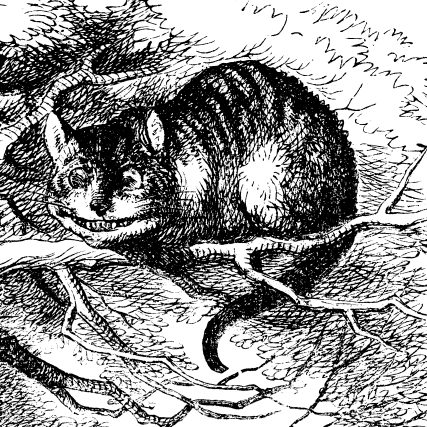The Impossibility of Quantum Cheshire Cats
We dive deep into a property that's so weird, it makes superposition look normal.
Short Summary:
The Quantum Cheshire Cat is a weird and wonderful quantum phenomena, where the properties of a particle can seemingly separate from the particle itself.
This marvel depends on a particular setup known as pre/post selected experimentation, as well as weak measurements.
Weak measurements are a type of quantum measurement that doesn’t disturb the quantum state - yet whether it provides accurate information is still up for debate.
There are no current applications of the Cheshire Cat, but it is theorised to have large implications for metrology, quantum sensing and could even extend to the realm of quantum computing.
You might have heard of a certain Cheshire cat before, reader? I should hope so - it’s from Lewis Carroll’s Alice’s Adventures in Wonderland. Named aptly, the Quantum Cheshire cat is a phenomena that bends the mind. Within the story, Alice stumbles across the Duchess’s cat. Slowly but surely, the body of the cat gradually disappears, leaving only one last visible trace: its iconic grin. In the quantum world we find a chillingly similar occurrence, the property of a particle is found at a different location to the particle itself. How is this possible?

First put forward by Aharonov et al in 2013, the team explored the properties of light particles and realised that it was possible for the polarisation of the photon to exist in a separate location to the photon itself. The proposed experiment for demonstrating such a phenomenon relies upon ‘weak measurements’, a type of measurement that doesn’t disturb the quantum system. Furthermore, the experiment must be “pre and post selected” - a certain setup that allows for weak measurements.
Weak measurements tease out the information from a quantum series by collating several small bits of information and averaging the result. Despite the mathematical and experimental validity of the Cheshire cat, as well as future neutron experiments showing similar results, a problem still remained… the interpretation.
Pre/Post Selected Experiments
In quantum mechanics, a pre/post selected experiment is a particular type of experiment that abides by the following rules:
Pre-selection: The quantum system is initially prepared in a known state.
Post-selection: After the process, the system is found in a final state.
Intermediate measurement: An additional measurement is made between start and finish, indicating intermediate properties of the system.
This intermediate stage is precisely where incredible paradoxes can occur, seemingly properties can become weird, amplified or even disembodied from their own particles.
In the case of Aharonov et al’s Cheshire Cat, it starts to beg the question… what other properties can separate? How would an electron with a disembodied charge affect a nearby electron? Or how might the gravitational field of a particle look when its mass is removed from the particle itself?
How should we interpret this?
Weak measurements do not necessarily reveal a hidden layer to reality, and at least in the macroscopic world we do not need to worry about separating properties. It is better to think of the phenomenon of the Cheshire Cat as an interpretation of quantum mechanics rather than an axiom. Indeed, it depends upon whether you interpret weak values as being real or rather statistical artifacts of the quantum mechanical framework. Another outlook is the Copenhagen interpretation, developed by Niels Bohr and Werner Heisenberg in the 1950s. This viewpoint attempts to bring meaning to quantum mechanics and argues that quantum mechanics is intrinsically indeterministic. Therefore this interpretation believes that properties don’t exist until they are properly measured and the system is disturbed - essentially opening the box for Schrodinger’s Cat.
And now, reader, we have entered the intersection with philosophy! At the deepest levels of quantum mechanics we pose questions about reality and interpretation. But this is not a philosophy blog so I must stop here, eh?

Applications of the Cheshire Cat
Regardless of how one interprets the Cheshire cat, there are many potential uses. For example, it might be possible to transfer information from one place to another without actually moving the particle. Equally, it may be possible to conduct experiments that utilise separating properties to their advantage - high precision metrology could benefit from this. Scientists have managed to split a three-property system, but there is yet to be any development towards consumer technology. So far, it remains a proof‑of‑principle proposal rather than something with commercial promise. This means that there is currently no link between the Cheshire cat and useful quantum computing. It is very possible that certain research can lead to more efficient entanglement schemes or information processing - two crucial aspects of quantum computing. We will have to wait and see!
To conclude
The Quantum Cheshire cat is meant to baffle, to contradict and to puzzle us. In the grand scheme of physics, quantum mechanics is still very young. As we delve deeper and expand the framework, we will continue to find things that we cannot explain - and that is okay! Half the work of physicists is to invent new formulae and measurements, and the other half is to bring understanding and meaning to the results.





In my mind Quantum Cheshire Cats is a very good example of quantum forcing everyone to view the concepts and the world differently.